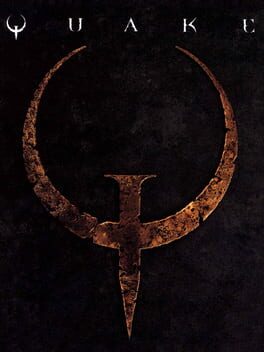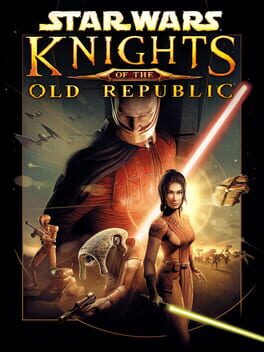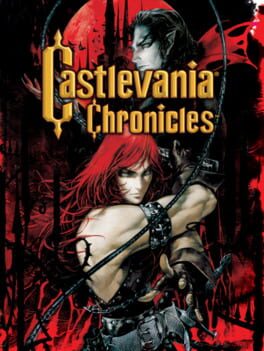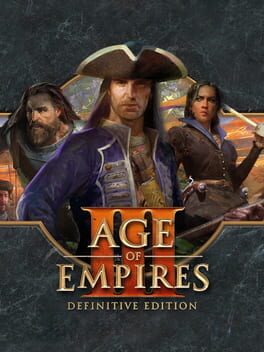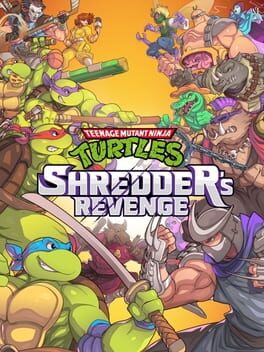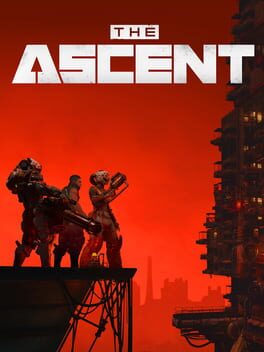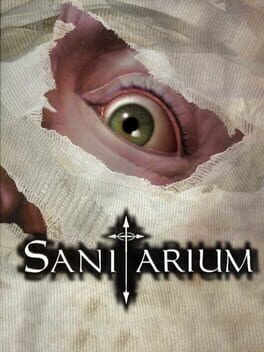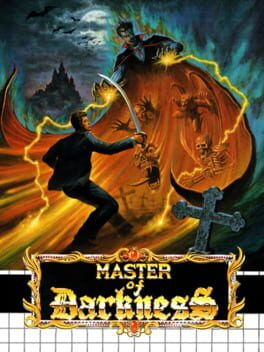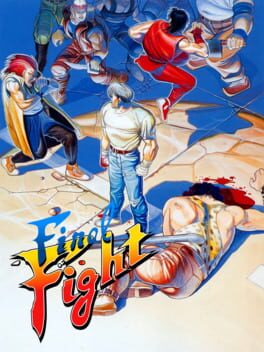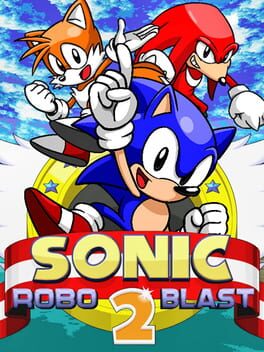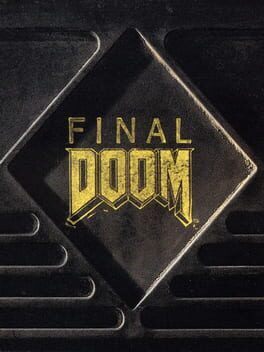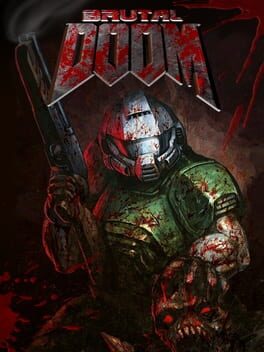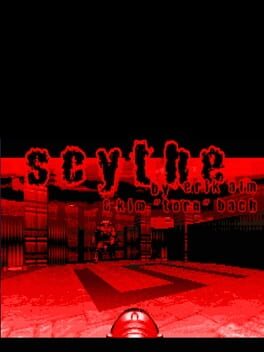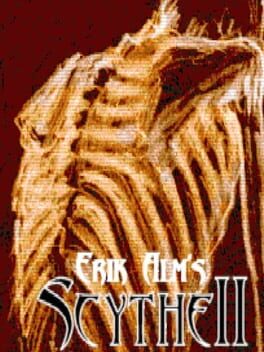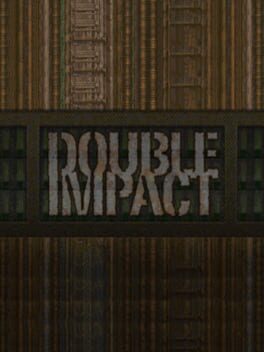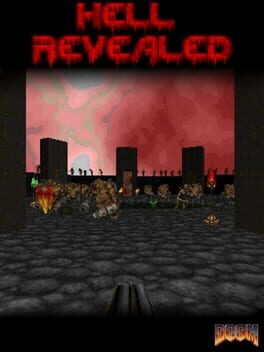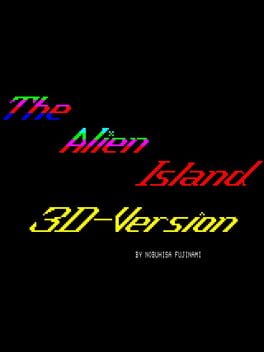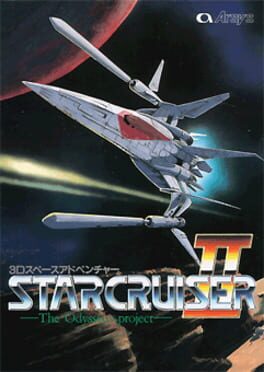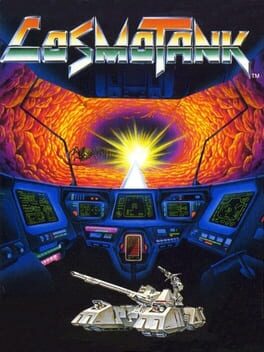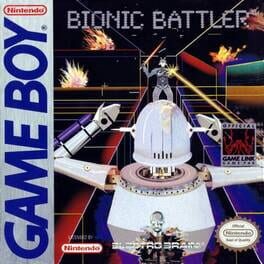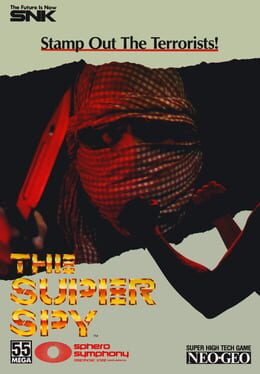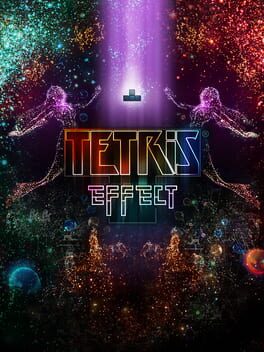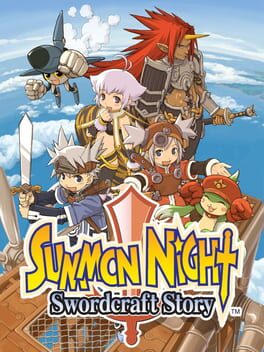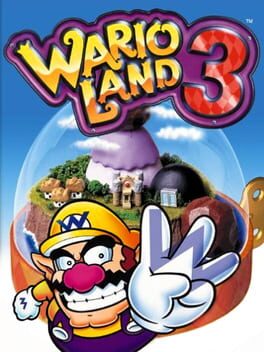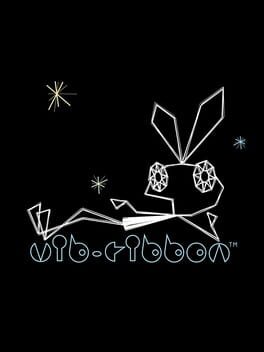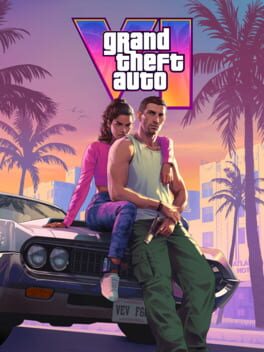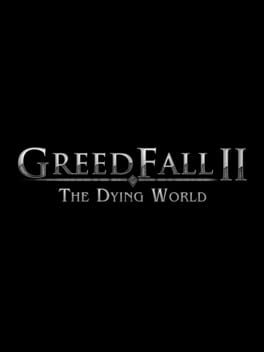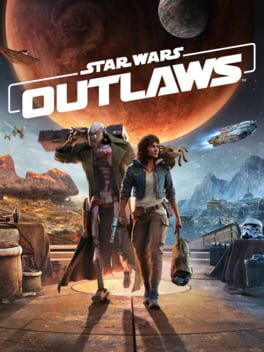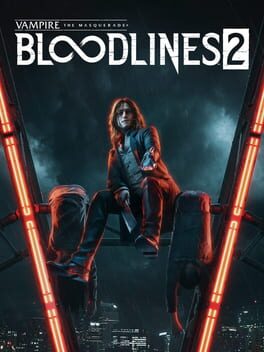diddy
140 reviews liked by diddy
Quake
1996
After several attempts to play through Quake over the years - each of which were abandoned at some point during the first two episodes... I've finally finished Quake, for the first time.
All in all - it's cool. I don't like it nearly as much as Doom, but then again, not much can really compare to Doom as far as FPSes go. Part of it is just due to personal preference (I prefer the more cheesy metal vibe of Doom over the gritty industrial vibe of Quake), but I also happen to find certain Quake enemies (the Shamblers, most notoriously) kind of annoying to fight, in a way that isn't very fun to deal with. It makes some encounters feel less enjoyable than they could have been. But overall, it's not a bad game at all. I'm glad I was able to finish it at long last.
All in all - it's cool. I don't like it nearly as much as Doom, but then again, not much can really compare to Doom as far as FPSes go. Part of it is just due to personal preference (I prefer the more cheesy metal vibe of Doom over the gritty industrial vibe of Quake), but I also happen to find certain Quake enemies (the Shamblers, most notoriously) kind of annoying to fight, in a way that isn't very fun to deal with. It makes some encounters feel less enjoyable than they could have been. But overall, it's not a bad game at all. I'm glad I was able to finish it at long last.
Started experiencing substance-abuse psychosis after eating too much wall chicken at Dracula's rave.
For those who do not know, Casltevania Chronicles is a repackaging of the Sharp X68000 remake of the original Castlevania, along with a new arranged mode that features a remixed soundtrack by Sōta Fujimori, and reworked sprites for Simon Belmont based on Ayami Kojima's artwork. Don't worry, he's still a total himbo. That's what these games have always been about: Dracula is a man of culture who wants to uphold the old age of intellectualism, whereas the Belmonts are a roving gang of himbos who represent the encroaching post-intellectual world, which poses both a literal and existential threat to Dracula. Don't question my media literacy, I know what I'm talking about!
Castlevania's hunky anti-intellectualism aside, this is a pretty solid remake of the first game, and I'd almost go so far as to say it's preferable to the original if I weren't so nostalgic for it. "Original Mode," which is a mostly unadulterated port of the X68000 version, is a lot of fun on its own, though a bit unforgiving in its difficulty. "Arranged Mode" is more balanced by comparison, and it's soundtrack helps make it my preferred mode between the two. Both offer up some fun subversions on Castlevania's level design, featuring new secrets and some alterations to levels that will keep you on your toes. If you want to get a sense of what I'm talking about, there's a very early case in level one. Just go for the first wall chicken after the starting hallway and you'll see what I mean.
Otherwise, much of my praise of the NES Castlevania remains relevant here. Platforming is rigid but great, and learning the rhythm of each level and improving upon past playthroughs is incredibly rewarding. It's also just fun, generally speaking, strutting on up to that nerd Dracula and kicking his ass. Dunk him in a toilet, give him a wedgie, then watch his fuckin' house collapse on him with the smug satisfaction of knowing your children, and your children's children, will continue to bully him until the end of time. That's what is really at the heart of these games. I took a film criticism course in college, we had to review The Bourne Legacy and, like, Inception. I think I know a thing or two about analyzing media.
For those who do not know, Casltevania Chronicles is a repackaging of the Sharp X68000 remake of the original Castlevania, along with a new arranged mode that features a remixed soundtrack by Sōta Fujimori, and reworked sprites for Simon Belmont based on Ayami Kojima's artwork. Don't worry, he's still a total himbo. That's what these games have always been about: Dracula is a man of culture who wants to uphold the old age of intellectualism, whereas the Belmonts are a roving gang of himbos who represent the encroaching post-intellectual world, which poses both a literal and existential threat to Dracula. Don't question my media literacy, I know what I'm talking about!
Castlevania's hunky anti-intellectualism aside, this is a pretty solid remake of the first game, and I'd almost go so far as to say it's preferable to the original if I weren't so nostalgic for it. "Original Mode," which is a mostly unadulterated port of the X68000 version, is a lot of fun on its own, though a bit unforgiving in its difficulty. "Arranged Mode" is more balanced by comparison, and it's soundtrack helps make it my preferred mode between the two. Both offer up some fun subversions on Castlevania's level design, featuring new secrets and some alterations to levels that will keep you on your toes. If you want to get a sense of what I'm talking about, there's a very early case in level one. Just go for the first wall chicken after the starting hallway and you'll see what I mean.
Otherwise, much of my praise of the NES Castlevania remains relevant here. Platforming is rigid but great, and learning the rhythm of each level and improving upon past playthroughs is incredibly rewarding. It's also just fun, generally speaking, strutting on up to that nerd Dracula and kicking his ass. Dunk him in a toilet, give him a wedgie, then watch his fuckin' house collapse on him with the smug satisfaction of knowing your children, and your children's children, will continue to bully him until the end of time. That's what is really at the heart of these games. I took a film criticism course in college, we had to review The Bourne Legacy and, like, Inception. I think I know a thing or two about analyzing media.
Pulseman
1994
It's always interesting to see conceptualizations of cyberspace from a time where computers weren't as commonplace as they are now. Psychedelic envisionings of worlds beyond our understanding, full of colorful and evocative imagery. In reality, a world of computers would most likely be formulaic and rigid, but who's to say that that has to be the case in fiction?
Pulseman does a few interesting things with this. The style and worlds are extremely beautiful and compelling, with cyberspace often feeling like a surreal dream. Pastel colors and trees that spin in the background, robotic birds and vector-based monsters traversing through the feverish landscapes. Pulseman, in addition to this, also has some amount of linear rigidity to its designs, though. Each level feels boxy. Mechanically concise. Efficient.
The imagined world of cyberspace and the direct world of assembly are one and the same in Pulseman, a fusion of conceptualization and simplification. Maybe, Pulseman argues, there is room for both a distinct style and mechanical focus.
Just maybe.
Then again, the actual mechanics of Pulseman aren't particularly captivating - while you're in awe at its stylistic choices, you'll probably notice that the levels you're blasting through don't have much going on in the department of actual play. Every level is a simple act of using your immense amount of tools, like your static charge that can become an electric ball or be used to become a whirling wheel of death that bounces off the walls, to obliterate everything in your path. This dissonance between the perceived harmony of style and substance and the actual lack of substance can be a bit jarring. There is no true harmony between the efficiency of technology and the artistic style of the human mind because the level designs simply aren't as interesting in their efficacy as they could be.
But damn. Talk about style!
Pulseman does a few interesting things with this. The style and worlds are extremely beautiful and compelling, with cyberspace often feeling like a surreal dream. Pastel colors and trees that spin in the background, robotic birds and vector-based monsters traversing through the feverish landscapes. Pulseman, in addition to this, also has some amount of linear rigidity to its designs, though. Each level feels boxy. Mechanically concise. Efficient.
The imagined world of cyberspace and the direct world of assembly are one and the same in Pulseman, a fusion of conceptualization and simplification. Maybe, Pulseman argues, there is room for both a distinct style and mechanical focus.
Just maybe.
Then again, the actual mechanics of Pulseman aren't particularly captivating - while you're in awe at its stylistic choices, you'll probably notice that the levels you're blasting through don't have much going on in the department of actual play. Every level is a simple act of using your immense amount of tools, like your static charge that can become an electric ball or be used to become a whirling wheel of death that bounces off the walls, to obliterate everything in your path. This dissonance between the perceived harmony of style and substance and the actual lack of substance can be a bit jarring. There is no true harmony between the efficiency of technology and the artistic style of the human mind because the level designs simply aren't as interesting in their efficacy as they could be.
But damn. Talk about style!
"Heroes in a half shell, Turtle Power!"
When the opening animated scene starts playing the theme tune to the 1987 animated show I felt like I had been transported to my childhood again. Whilst Shredder's Revenge leans into that nostalgia bait with aplomb using cameos, some of the original voice cast and influence from Konami's original beat 'em up Turtles in Time, the thing is Shredder's Revenge is just a good game that respects the source material, but doesn't rely solely on it.
This game features 16 stages selected across a Super Mario World styled map you move the Turtle Van onto to select. There are 7 playable characters to play and though their basic move sets are identical in controls the attacks and animations are specific to each character based on their personality. Leonardo is very professional, Michelangelo does a dance yelling "party dude!" for his taunt, April smash's Foot clan in the face with camera equipment etc. There is a lot of love and care put into it. The actual combat is pretty simple with basic attacks, run attacks, a super various jump attacks and a dedicated dodge button. As you beat enemies of find collectables you gain experience and your character levels up gaining new moves or extra health. Though the game itself is fairly easy especially playing multiplayer (I've only tried two player with a friend so far but it goes up to six somehow) there are challenges for each level including some for not taking damage which offer a bit more of a skill based gameplay to aim for.
The thing I love most about this game though is how hard they nailed the aesthetic. The sprite work is wonderful, the art design is spot on and The Original Soundtrack Manages to sound both retro and modern at the same time done by Tee Lopes responsible for the sublime Sonic Mania OST.
This game is basically exactly what I wanted. Roll on the Cowabunga Collection.
+ Great references to the original animated show.
+ Fun game with a lot of heart.
+ Fantastic visual design.
+ Amazing modern/retro soundtrack.
When the opening animated scene starts playing the theme tune to the 1987 animated show I felt like I had been transported to my childhood again. Whilst Shredder's Revenge leans into that nostalgia bait with aplomb using cameos, some of the original voice cast and influence from Konami's original beat 'em up Turtles in Time, the thing is Shredder's Revenge is just a good game that respects the source material, but doesn't rely solely on it.
This game features 16 stages selected across a Super Mario World styled map you move the Turtle Van onto to select. There are 7 playable characters to play and though their basic move sets are identical in controls the attacks and animations are specific to each character based on their personality. Leonardo is very professional, Michelangelo does a dance yelling "party dude!" for his taunt, April smash's Foot clan in the face with camera equipment etc. There is a lot of love and care put into it. The actual combat is pretty simple with basic attacks, run attacks, a super various jump attacks and a dedicated dodge button. As you beat enemies of find collectables you gain experience and your character levels up gaining new moves or extra health. Though the game itself is fairly easy especially playing multiplayer (I've only tried two player with a friend so far but it goes up to six somehow) there are challenges for each level including some for not taking damage which offer a bit more of a skill based gameplay to aim for.
The thing I love most about this game though is how hard they nailed the aesthetic. The sprite work is wonderful, the art design is spot on and The Original Soundtrack Manages to sound both retro and modern at the same time done by Tee Lopes responsible for the sublime Sonic Mania OST.
This game is basically exactly what I wanted. Roll on the Cowabunga Collection.
+ Great references to the original animated show.
+ Fun game with a lot of heart.
+ Fantastic visual design.
+ Amazing modern/retro soundtrack.
The Ascent
2021
Normally I try and write something about my thoughts generally I had whilst playing a game at the start of reviews but honestly The Ascent simply isn't worth the effort. It's a gorgeous twin stick shooter RPG that is simply a chore to play in almost every aspect.
To start it easily has the worst map of any game I've ever played. It's utterly useless in every possible way. It's as useless as a cocktail umbrella in a hurricane level useless. You can't see where you are, where you need to go, what the different districts, paths or layers are, it's simply a red blob. To compound matters the level design itself is almost as bad. Whilst I do appreciate the sprawling interweaving cyberpunk aesthetic, I don't appreciate the convoluted paths to go anywhere. The fast travel is an utter chore due to either coting credits for a taxi we didn't figure out for 20 hours or trying to use a metro system we could never find because the map is so insanely bad we may as well had Ray Charles as our guide.
The combat can be fun and occasionally meaty with shotguns and rifles having decent weight and sound but it all gets so repetitive. All you do is run back and forth following inane quests as the story is just dull with forgettable characters, no real set pieces and the loot you get is just really uninteresting to the point we barely changed gear. Just 20 hours of MC Hammer pants.
Add to this the bugs with an insanely annoying audio glitch of a machine gun endlessly firing we kept getting, being stuck in scenery, hard crashing and eventually we gave up, we just weren't having fun.
It's a shame as the team obviously have talent and passion for what they are doing, it's just sadly tedious to actively play.
+ Gorgeous visuals.
+ Combat can be fun.
- Worst map I've seen in 30 years of gaming.
- Level design is bad.
- Story and characters are forgettable.
- Loot is boring.
To start it easily has the worst map of any game I've ever played. It's utterly useless in every possible way. It's as useless as a cocktail umbrella in a hurricane level useless. You can't see where you are, where you need to go, what the different districts, paths or layers are, it's simply a red blob. To compound matters the level design itself is almost as bad. Whilst I do appreciate the sprawling interweaving cyberpunk aesthetic, I don't appreciate the convoluted paths to go anywhere. The fast travel is an utter chore due to either coting credits for a taxi we didn't figure out for 20 hours or trying to use a metro system we could never find because the map is so insanely bad we may as well had Ray Charles as our guide.
The combat can be fun and occasionally meaty with shotguns and rifles having decent weight and sound but it all gets so repetitive. All you do is run back and forth following inane quests as the story is just dull with forgettable characters, no real set pieces and the loot you get is just really uninteresting to the point we barely changed gear. Just 20 hours of MC Hammer pants.
Add to this the bugs with an insanely annoying audio glitch of a machine gun endlessly firing we kept getting, being stuck in scenery, hard crashing and eventually we gave up, we just weren't having fun.
It's a shame as the team obviously have talent and passion for what they are doing, it's just sadly tedious to actively play.
+ Gorgeous visuals.
+ Combat can be fun.
- Worst map I've seen in 30 years of gaming.
- Level design is bad.
- Story and characters are forgettable.
- Loot is boring.
Sanitarium
1998
The main issue I have with these old school adventure games (IHNMAIMS is another good example) is how uneven the tone of the story is. Sanitarium has some strong imagery, certain depiction of body horror and gore are strong and effective still today thanks to the incredible and timeless work the art department did in designing some of the most brutal sections (The Hive for example is a visual nightmare), and the writing reflects that, almost lovecraftian in describing the dread felt by the characters.
But then there are other sections filled with out of place humour or clearly toned down (i.e. most of the Lost Village or the Circus), required for some levity or just a way for the developers to have some fun with their game, but still way less impressive or memorable compared to what the game has accustomed the players to.
The story itself is pretty good but without much fanfare or twists, it wants to be a psychological thriller and horror but it plays very straight for most of the time and there isn't much room left for debate about what is going on or what the metaphors under each level mean. Not that being simple and direct is necessarily a flaw, but thematically speaking it felt like halfway through the game it had already played each of its cards and I was just left putting down the royal flush without tension or thinking required.
Also some puzzles are just a pixel nightmare dictated by noticing minute details that for the life of me are indistinguishable from the backgrounds, and the stairs' animation detection with this system of movement is trauma inducing.
Yet all in all it is certainly a timeless adventure game, son of the best the 90s had to offer despite some light missteps and almost consistently enjoyable visually, albeit clearly having some sections much weaker than others.
But then there are other sections filled with out of place humour or clearly toned down (i.e. most of the Lost Village or the Circus), required for some levity or just a way for the developers to have some fun with their game, but still way less impressive or memorable compared to what the game has accustomed the players to.
The story itself is pretty good but without much fanfare or twists, it wants to be a psychological thriller and horror but it plays very straight for most of the time and there isn't much room left for debate about what is going on or what the metaphors under each level mean. Not that being simple and direct is necessarily a flaw, but thematically speaking it felt like halfway through the game it had already played each of its cards and I was just left putting down the royal flush without tension or thinking required.
Also some puzzles are just a pixel nightmare dictated by noticing minute details that for the life of me are indistinguishable from the backgrounds, and the stairs' animation detection with this system of movement is trauma inducing.
Yet all in all it is certainly a timeless adventure game, son of the best the 90s had to offer despite some light missteps and almost consistently enjoyable visually, albeit clearly having some sections much weaker than others.
Master of Darkness
1992
Vampire: Master of Darkness is a Castlevania inspired gothic-horror action game for the Master System, and due to it releasing pretty late in the system's cycle looks like a really advanced 8-bit game. It basically pays homage to the original in many ways: from the game structure to its UI design, even the pick-ups and weapon system, to the end boss; it really is 8-bit Castlevania in everything but the name for a SEGA system.
The music is pretty fantastic, controls well (you can control your jumps mid-air, unlike the original Castlevania, which is a massive improvement). You get to visit a variety of locales - from the River Thames to wax museums and graveyards, and ultimately to Dracula's castle.
Castlevania had Frankenstein, Medusa, the Grim Reaper, and Dracula himself as the bosses. Except the infamous Jack the Ripper, there is no other compelling boss-fight, with the Dracula one being a damp squib.
The music is pretty fantastic, controls well (you can control your jumps mid-air, unlike the original Castlevania, which is a massive improvement). You get to visit a variety of locales - from the River Thames to wax museums and graveyards, and ultimately to Dracula's castle.
Castlevania had Frankenstein, Medusa, the Grim Reaper, and Dracula himself as the bosses. Except the infamous Jack the Ripper, there is no other compelling boss-fight, with the Dracula one being a damp squib.
Final Fight
1989
The arcade version is absolutely fantastic and completely blew me away. Now, we already got two great brawlers in '89: Golden Axe and TMNT, but Final Fight really brought more quality and refinement to the fledgling genre. Huge gorgeous sprites, great animation that feels distinct among the three fighters, massive number of enemies on screen and the core fighting is simply outstanding through the entire ~1 hour playtime. Haggar the wrestler feels completely different from Guy and Cody with Guy being the most nimble and Cody having the best balance. They bash and biff their way through the entire Metro City to save Mayor Haggar's daughter Jessica from the street gang Mad Gear and their despicable boss, Belger.
Capcom really raised the bar in '89 and ushered in a new era for the beat-'em-up genre.
Capcom really raised the bar in '89 and ushered in a new era for the beat-'em-up genre.
5 lists liked by diddy
